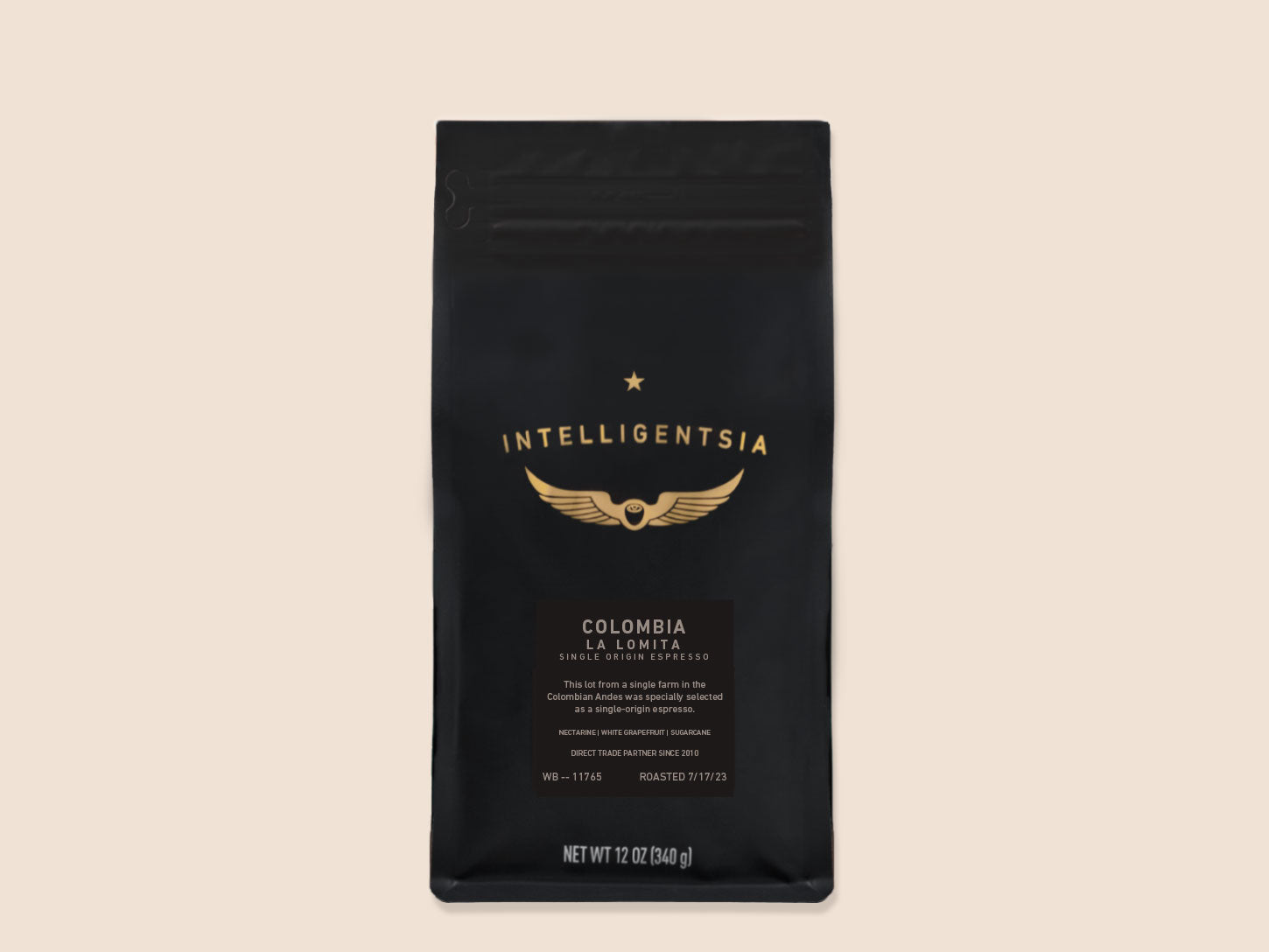Checking Out the Abundant Tastes of Coffee Beans: a Deep Study Espresso and Blended Coffee Beans
When you check out the abundant tastes of coffee beans, you uncover an intricate globe where each range brings its own character to your mug. As you navigate through the art of espresso and the creativity behind blended coffees, you'll start to value the nuances that make each sip unique.
The Beginnings of Coffee Beans: Exploring Terroir and Flavor Profiles
When you take a sip of coffee, you're not simply taking pleasure in a beverage; you're experiencing a rich tapestry of tastes formed by the beans' origins. Each region produces special taste accounts affected by environment, dirt, and elevation. Beans from Ethiopia often burst with intense, fruity notes, while those from Colombia tend to provide a well balanced, nutty sweetness.
As you check out different beginnings, you'll see exactly how terroir-- the environmental factors affecting a plant-- plays an important role - Single Origin Espresso. The same coffee selection can taste dramatically various relying on where it's grown
When you consider these elements, you start to value the complexity behind your mug. Each sip informs a tale of the land and the farmers that supported the beans. Next time you delight, think concerning the journey your coffee took prior to it reached your hands, and savor those intricate tastes that reflect its origin.
Understanding Espresso: The Art and Scientific Research Behind the Mixture
When you think of espresso, it's not practically the strong taste; it's also regarding the techniques that bring it to life. Understanding exactly how different preparation approaches influence taste can transform your developing experience. Allow's check out the details of espresso prep work and reveal the unique taste accounts that make each cup unique.
Coffee Preparation Methods
Espresso prep work is both an art and a scientific research, combining specific methods with a deep understanding of coffee. To begin, you'll wish to choose top quality, freshly baked beans and grind them finely for ideal removal (Single Origin Espresso). The grind size is essential; as well coarse, and your coffee will be weak, also great, and it'll be bitter
Next, tamp the premises uniformly in the portafilter to guarantee consistent extraction. When you secure it into the equipment, go for a developing temperature level between 190 ° F and 205 °
F.As you draw the shot, watch for the excellent extraction time-- around 25-30 secs. The result needs to be a rich, creamy coffee with a stunning layer of crema on top. With method, you'll master these methods.
Taste Profiles Described
The world of coffee provides an abundant tapestry of flavor accounts that can boost your coffee experience. You'll see a balance of bitterness, level of acidity, and sweet taste when you take that initial sip. Each espresso bean carries distinct notes, from fruity and flower to nutty and chocolaty. Light roasts often showcase brilliant level of acidity and vivid flavors, while dark roasts present deeper, bolder tones.
A well-crafted blend may integrate the brilliant notes of an Ethiopian bean with the rich, chocolatey undertones of a Brazilian bean. Welcome the trip of finding espresso's varied tastes, and you'll transform your coffee ritual right into an amazing journey.
Handling Methods: Just How They Impact Flavor and Fragrance
While it may appear that the origin of coffee beans is the most substantial consider identifying their taste and scent, the processing approaches used post-harvest play an equally essential duty. You'll discover that these methods can significantly modify the final preference profile of your mug.
For instance, the washed process eliminates the fruit from the beans before fermentation, usually causing a cleaner, brighter flavor. The all-natural process leaves the fruit intact throughout drying, resulting in a sweeter, fruitier account.
Various other techniques, like honey handling, strike a balance, permitting some fruit mucilage to remain, providing an unique complexity.
Each handling technique connects with the beans' intrinsic characteristics, improving or muting details flavors and scents. So, when you sip that espresso or combined coffee, keep in mind that the journey from cherry to mug is influenced not just by beginning yet also by exactly how those beans were refined.
Toasting Techniques: Unlocking the Complete Possible of Coffee Beans
Roasting strategies are important for exposing the full potential of coffee beans, as they transform raw, green beans right into the aromatic, delicious coffee you take pleasure in. The selection of toasting approach-- light, tool, or dark-- dramatically affects taste accounts.
You can trying out toasting times and temperatures to find your perfect mixture. A slower roast at reduced temperatures enables for complex tastes to develop, while a quicker roast can heighten bitterness. Pay attention to more info here the splits throughout roasting; the first split suggests a light roast, while the 2nd fracture signals a dark roast. By mastering these techniques, you'll disclose a globe of flavor, boosting your coffee experience to brand-new heights. Enjoy every sip, recognizing the treatment that went into your mug!
The Magic of Blended Coffee: Producing Unique Taste Experiences
Producing an unique taste experience with blended coffee can change your early morning routine right into an expedition of taste. By integrating different beans from different regions, you can expose a harmony of flavors that boost your cup to brand-new heights. Each mix offers a distinctive profile, stabilizing sweetness, body, and level of acidity to develop something absolutely special.
When you choose a mix, you're not just choosing a coffee; you're selecting a journey throughout diverse landscapes and cultures. Try out different combinations permits you to discover your personal faves, whether you enjoy fruity notes or rich, chocolatey touches.

Tasting Notes: Acknowledging the Subtleties in Your Mug
As you drink your coffee, you might discover a spectrum of tastes dancing on your taste, each revealing the complexities of the beans. You might taste the intense level of acidity reminiscent of citrus or the deep, rich notes similar to dark delicious chocolate. The sweet taste can evoke honey or caramel, balancing the general profile magnificently.
Focus on the body of the coffee-- does it feel light and ventilated, or is it full and velvety? The coating, too, provides hints; a lingering aftertaste may mean nuttiness or flower touches.

Do not neglect to explore the distinct qualities of different beginnings, as each area imparts distinct flavors - Single Origin Espresso. As an example, Ethiopian coffees frequently present fruity notes, while Colombian beans might showcase an extra spherical sweetness. By identifying these subtleties, you'll strengthen your recognition for every cup, elevating your coffee experience to brand-new heights

Developing Approaches: Maximizing Taste Removal for Every Bean
When you discover the different brewing approaches, you'll find that each technique can significantly influence the flavor account of your coffee. From French press to pour-over, each technique extracts various compounds, boosting or muting details notes. Using a French press permits oils to stay in the mixture, producing a richer preference, while pour-over highlights quality and brightness.
Temperature level and grind size also play necessary roles. A coarser grind works best for cold brews, while a fine work is suitable for espresso. Try out water temperature level-- between 195 ° F and 205 ° F-- can expose hidden flavors, as well.
Do not forget soaking time; a quick extraction can bring about sour notes, while over-extraction may produce anger. By adjusting these variables, you can maximize flavor extraction and absolutely elevate your coffee experience. Take pleasure in the trip of discovering what method finest matches your palate!
Frequently Asked Concerns
What Is the Perfect Water Temperature Level for Brewing Coffee?
The optimal water temperature level for developing coffee's between 195 ° F and 205 ° F. If you use water that's as well warm, you'll over-extract tastes; too cold, and you won't remove sufficient. Go for that sweet area for the very best mixture!
Just How Does Work Dimension Affect Coffee Flavor?
Grind size significantly influences coffee taste. Better grinds extract much more oils and flavors, causing a bolder preference, while coarser grinds yield a lighter flavor. Adjusting grind size assists you accomplish your preferred coffee account.
Exist Wellness Perks Linked With Alcohol Consumption Coffee?

What Is the Distinction In Between Arabica and Robusta Beans?
Arabica beans are smoother and sweeter, commonly featuring fruity flavors, while robusta beans are more powerful with a bitter preference and higher caffeine web content. You'll see these distinctions in scent and brewing experience.
Just How Can I Store Coffee Beans for Freshness?
To save coffee beans for quality, keep them in an airtight container, far from heat, light, and moisture. If you only grind what you require right before brewing., you'll keep their taste longer.
Exploring the his explanation Rich Tastes of Coffee Beans: a Deep Dive Into Coffee and Blended Coffee Beans.
When you explore the abundant flavors of coffee beans, you uncover a complex globe where each range brings its very own personality to your cup.When you take a sip of coffee, you're not simply appreciating a beverage; you're experiencing an abundant tapestry of flavors formed by the beans' origins.Roasting techniques are crucial for exposing the full potential of coffee beans, as they change raw, green beans right into the aromatic, savory coffee you delight in.As you drink your coffee, you might observe a spectrum of flavors dancing on your taste, each revealing the ins and outs of the beans.